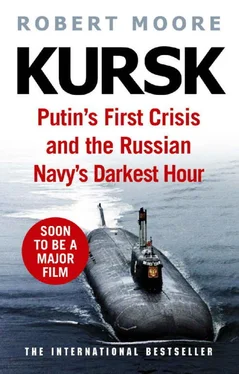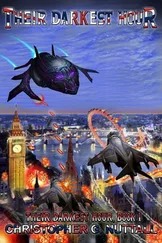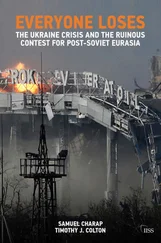The pressure to send positive news to the Defence Ministry was intense, and Admiral Popov obliged by giving a pre-recorded television interview expressing deep satisfaction with the performance of the ships and submarines and describing the manoeuvres as a resounding success. The crews, he added, were heading home.
As premature congratulatory statements go, this would take some beating, for the exercise was not quite over. All four submarines – the attack subs the Kursk , the Boriso-Glebsk and the Daniil Moskovsky and the SSBN the Karelia – still had to go through their paces.
The attack submarines were tasked to fire torpedoes, and the Karelia was to launch a ballistic missile. On board the Northern Fleet submarines, the commanding officers were preparing for the tactical phase of the war games, when they would manoeuvre within their pre-assigned ‘patrol boxes’ and try to avoid detection by the Russian surface ships. The Fleet gave prizes to the submarine crew that performed best, and there was a good-natured rivalry between the commanding officers for the awards.
As the sun rose higher in the clear Arctic sky that Saturday morning, the Peter the Great and her support ships surged through the sea on a westerly heading. The group’s exact movements were kept secret, to introduce an element of surprise. Before long, the ships turned around, sweeping back on a south-easterly heading. All the submarines were now deployed in their firing areas, and each captain signalled to the Fleet command that he was waiting for the final phase of the exercise to begin.
The Kursk signal – ‘We are ready for torpedo firing’ – was received at 8.51 a.m.
This would be the final communication from the Kursk until she reported the completion of the test. Each submarine was under strict instructions to stay within her specified exercise area. This eliminated the possibility of a collision and would also help the surface ships detect the presence of a Western spy sub. Any acoustic contact moving quietly below the waves but outside the designated patrol boxes could be regarded as a hostile Western submarine.
The whole focus of the Kursk ’s operations now shifted to the forward two compartments, which housed the command centre and the torpedo room. The rest of the submarine simply existed to transport the weapons to the firing point, and now the flair, tactical skill and cool nerves of the commander took centre stage.
Captain Lyachin liked to stand in the heart of the central command post in the run-up to a torpedo launch, watching over his team and absorbing information from those around him. The officers were excellent professionals, and their mood was upbeat. In each compartment there were men he completely trusted, a bond forged during the long Mediterranean patrol nine months before. He had the comfort of knowing that extra technicians were working in the torpedo room, and he was not bothered by the presence in the control centre of several senior, shore-based staff officers, who had joined the sub for the exercises.
In a properly worked-up submarine, the atmosphere is calm and professional at this time. Submarine commanding officers say that the perfect attack is conducted in a taut, efficient and ruthlessly clinical manner. But for Russian submarine COs, with much less training than their Western counterparts, a weapons launch is an anxious affair. Despite his confidence in the crew, Lyachin was well aware of the heightened risks that resulted from the atrocious condition of the Fleet’s infrastructure. Even as he concentrated on the flow of orders and preparations leading up to his imminent order to fire, he had to wrestle with a number of disturbing questions. These were doubts that preoccupied all Russian sub commanders. Were the test torpedoes being re-used too often? Had a warhead been destabilized during poor handling? Were the safety rules about weapons storage being strictly enforced?
Once the Peter the Great penetrated the Kursk ’s designated area, and Lyachin was satisfied with his line of attack, he would order the launch of two special practice torpedoes in quick succession. The warheads had been removed from the weapons, and in their place devices had been installed to record the speed, direction and depth of the torpedoes. In addition, a safety feature was fitted to each, which ensured that they would run too deep to risk hitting a surface ship. Flotation devices would bring the torpedoes to the surface at the end of their runs.
An alarm rang throughout the submarine, one short burst, then a long one lasting twenty seconds, the signal for the crew to man their battle stations. A voiced command from a senior officer then explained the reason for the alarm:
‘Uchebnaya trevoga. Torpednaya ataka .’ ‘Practice alarm. Torpedo attack.’
The Kursk moved into position for the launch. A torpedo slid into the larger 650mm tube, on the starboard side, with a sharp hiss of air and the sound of the tube’s breech door closing behind it. In the torpedo room, all appeared well. In keeping with common practice during firings, the reinforced, watertight doors between the command centre and the torpedo room were opened, which helps to minimize the change in pressure and to dissipate the noise of a weapon’s launch.
Just before 11.30 a.m. Lyachin was making the final calculations of the firing geometry and choosing the precise timing of the attack.
The chain of events that would soon unfold was triggered not by Lyachin but by an unforeseen development in the first compartment’s torpedo room, a crowded workspace filled with weapon racks. With their distinctive green-and-grey steel casings, the torpedoes lie on shelving, their propellers wrapped in protective covering. A narrow walkway down the centre allows the technicians to inspect the weapons, but it’s a tight squeeze.
Modern torpedoes are built with the same basic design as the primitive versions of eighty years ago: at the front lies a warhead, and behind that is a propulsion system to drive the torpedo through the water as well as a guidance system to steer the weapon to its target. In the earliest days, when the torpedo was proving itself as a weapon during the First World War, the warhead featured a fuse that was triggered to explode when it collided with a ship’s hull. The torpedo’s propulsion was driven by either compressed air or an electric motor. The new generation of underwater weapons are much more devastating, designed to travel much faster, to carry greater destructive power over increased range and to pursue a target actively. They are ultra-high-performance machines that, once released, engage in a dramatic sprint towards an ever-shifting target in the ocean. Some naval engineers compare the race to a cheetah’s pursuit of an antelope – the hunter following every desperate twist and turn of the prey, all the time closing in for the kill.
The search for extreme performance in an underwater weapon has heightened dangers. High-speed and long-range torpedoes require huge quantities of energy; the energy stored in the propulsion section of a modern high-performance torpedo exceeds even that of the warhead. The engineering challenge is how to tame this energy until the moment of launch.
In the 1920s, propulsion engineers came up with the idea of powering a torpedo by using a conventional fuel, such as kerosene, and giving it an immense energy boost by mixing it with an oxidant. That combination would result in a furious but contained chemical reaction. The best theoretical choice was liquid oxygen, but it was judged far too dangerous and volatile to store inside a submarine. Second best was hydrogen peroxide, known in its highly concentrated form as high-test peroxide (HTP).
Читать дальше












